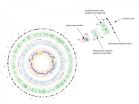Significant progress made towards individualized cancer immunotherapy
Recent immunological findings and technological progress pave the way for customized cancer vaccines; results published in Nature
2015-05-12
(Press-News.org) This news release is available in German.
Mainz-based researchers have made significant advances with regard to the development of individualized immunotherapy strategies for treating cancer. They have managed to identify the relevant genetic changes or mutations associated with various types of cancer and have determined their individual blueprints. This makes it possible for the scientists to readily produce customized cancer vaccines of the kind that have already been demonstrated to be effective in animal models. Here they have proven effective in the regression and even elimination of experimental tumors. Headed by cancer researcher Professor Ugur Sahin, participants in the successful project included researchers at the biopharmaceutical research institute TRON - Translational Oncology at the University Medical Center of Johannes Gutenberg University Mainz gGmbH, the biotech company BioNTech AG, the Mainz University Medical Center, and the Californian La Jolla Institute for Allergy and Immunology in the USA. Their results have recently been published in the journal Nature.
Unlike the conventional methods of treating cancer, i.e., surgery, chemotherapy, and radiotherapy, cancer immunotherapy uses the immune system to fight cancer. "We now know that our immune system itself is able to recognize cancer and take steps to fight it," explained Professor Ugur Sahin. "Unfortunately, it is not usually capable of controlling a tumor. One obvious strategy is therefore to stimulate the immune system in such a way that it is able to restrict tumor growth and to destroy malignant cells." It has also long been known that each tumor has its own individual genetic fingerprint that includes numerous genetic alterations.
The innovative concept of individualized cancer immunotherapy aims to identify these mutations in a tumor, to decipher its genetic blueprint through sequencing, and - using this blueprint as a template - to produce a synthetic vaccine that is specific to the tumor and thus to the patient. This vaccine will then supervise and train the body's own immune system so that it is able to fight the cancer in a targeted manner. "The implementation of this promising approach has to date been hampered by the fact that tumor mutations differ greatly from patient to patient, meaning that it is a very complex procedure to create vaccines on demand," added Sahin. "Through our recent research, we have found a way to bypass this problem and demonstrate what form a practicable strategy with acceptable outlay might take. We describe both fundamental immunological insights and technological advances that should allow us to deliver truly personalized immunotherapy to cancer patients."
In pre-clinical experiments, the researchers first looked at the mutations in three different types of tumors - skin cancer, colonic cancer, and breast cancer - and identified their genetic blueprints by means of sequencing. Their objective was to discover which mutations are relevant to immunotherapy, i.e., the mutations that can, in principle, be recognized by the immune system. The Mainz-based team was able to demonstrate for the first time that up to 20 percent of all mutations can trigger an immune response. "We discovered this by keeping an open mind and looking at the entire repertoire of immune defense mechanisms. This was an important factor in our success," said Sahin. "Because, surprisingly, the majority of tumor mutations are not detected by the usual suspects, the natural killer cells, but rather by so-called helper cells. Such a high proportion of relevant mutations, in turn, is important for the broad applicability of the approach, because many tumor types thus have sufficient points of attack and appear to be treatable in principle."
In a second phase, the team considered how they could implement these new insights in practice and identify the relevant mutations as simply and reliably as possible. For this purpose, they developed a bioinformatic algorithm. "Once the relevant mutations have been identified, we can use this information to create a customized medication without excessive efforts," asserted Sahin. They decided to use so-called ribonucleic acids (mRNA) to synthesize vaccines. With the help of the genetic mutation fingerprint, these provide a kind of template for the production of mRNA vaccines. The researchers used the genetic information on ten mutations rather than on just a single mutation for the synthesis process so that they would be able to attack the tumor, as it were, in several places at once ensuring that it would be less capable of resistance. In fact, the use of this approach in an animal model resulted in an effective regression and elimination of tumors. The RNA vaccines do not cause permanent genetic modifications to the genetic makeup of tumor cells, but are, to put it simply, eliminated after they have done their work of stimulating and instructing the body's immune system. "All this shows that the on-demand production of customized vaccines to treat cancer is, in fact, possible and practicable," emphasized Professor Ugur Sahin.
The researchers were also able to identify matching types and incidences of relevant mutations in human tumors. Their findings are to be further tested in an international clinical study of malignant melanoma in which the Rhine-Main Skin Cancer Research Center of the University Medical Center of Johannes Gutenberg University Mainz (JGU) headed by Dr. Carmen Loquai will be participating. Additional clinical trials are being planned.
"We systematically take a translational approach to research," emphasized Professor Ulrich Förstermann, Chief Scientific Officer of the Mainz University Medical Center. "The current research project impressively demonstrates the success of this strategy as it is an example par excellence of the translation of findings into therapy. The results of fundamental immunological research have been converted into a practicable clinical strategy." Professor Babette Simon, Chief Medical Officer and Chairperson of the Mainz University Medical Center, added: "This rapid 'from bench to bedside' development is a unique feature of university medicine. This ensures that we are able to deliver the latest findings from fundamental research to patients as quickly as possible."
INFORMATION:
[Attachments] See images for this press release:

ELSE PRESS RELEASES FROM THIS DATE:
2015-05-12
PITTSBURGH--Bragging to coworkers about a recent promotion, or posting a photo of your brand new car on Facebook, may seem like harmless ways to share good news.
However, a new study from City University London, Carnegie Mellon University and Bocconi University shows that self-promotion or a "humblebrag" often backfires.
Published in Psychological Science, Irene Scopelliti, George Loewenstein and Joachim Vosgerau wanted to find out why so many people frequently get the trade-off between self-promotion and modesty wrong. They found that self-promoters overestimate how ...
2015-05-12
Pollution from historic mining activities in south west England has led to a reduction in genetic diversity of brown trout according to new research from the University of Exeter. The findings, which will be published on Friday 15 May in the journal Evolutionary Applications, indicate that human activity can alter the genetic patterns of wild populations - an important issue in modern conservation.
The prevalence of metal contaminants in rivers across the south west of England is directly linked to mining activities dating back hundreds of years. Exposure to high concentrations ...
2015-05-12
Today's imagery from NASA's AIRS instrument on the Aqua satellite indicates more severe weather is in store for the Midwest from Texas to Michigan. There is another extremely strong storm that is stretching from south to north and into Canada, and that system can be seen in this AIRS image from May 11, 2015. The first image (left) was taken at 3:35 am EDT, by the time the second image (right) was taken at 2:41 pm EDT the system had come together and was stretching across the nation vertically across the country.
Current weather forecasting predicts that Monday evening ...
2015-05-12
CORVALLIS, Ore. - Researchers have discovered why many animal species can spend their whole lives outdoors with no apparent concern about high levels of solar exposure: they make their own sunscreen.
The findings, published today in the journal eLife by scientists from Oregon State University, found that many fish, amphibians, reptiles, and birds can naturally produce a compound called gadusol, which among other biologic activities provides protection from the ultraviolet, or sun-burning component of sunlight.
The researchers also believe that this ability may have ...
2015-05-12
Using a smart tablet and a red beam of light, Georgia Institute of Technology researchers have created a system that allows people to control a fleet of robots with the swipe of a finger. A person taps the tablet to control where the beam of light appears on a floor. The swarm robots then roll toward the illumination, constantly communicating with each other and deciding how to evenly cover the lit area. When the person swipes the tablet to drag the light across the floor, the robots follow. If the operator puts two fingers in different locations on the tablet, the machines ...
2015-05-12
Diet exerts a major impact on health and ageing. The nervous system plays an important role in this process but, thus far, how food signals are interpreted by the nervous system has been a mystery. This is an important question because the perception of food by the nervous system impacts not just ageing, but also other processes associated with health and disease, including metabolism, reproduction, and development.
A new study published in eLife by researchers from the MRC Centre for Developmental Neurobiology (MRC CDN) at the Institute of Psychiatry, Psychology & Neuroscience ...
2015-05-12
To measure distances in the Universe, astronomers use Cepheids, a family of variable stars whose luminosity varies with time. Their role as distance calibrators has brought them attention from researchers for more than a century. While it was thought that nearly everything was known about the prototype of Cepheids, named Delta Cephei, a team of researchers at the University of Geneva (UNIGE), the Johns Hopkins University, and the European Space Agency (ESA), have now discovered that this star is not alone, but that it has a hidden companion. A revelation published in The ...
2015-05-12
MADISON, Wis. -- Expansion of cattle pastures has led to the destruction of huge swaths of rain forest in Brazil, home to the world's largest herd of commercial beef cattle. But a new study led by the University of Wisconsin-Madison's Holly Gibbs shows that market-driven "zero deforestation agreements" have dramatically influenced the behavior of ranchers and the slaughterhouses to which they sell.
Publishing today [May 12, 2015] in the journal Conservation Letters, the research team - including other UW-Madison scientists, the National Wildlife Federation, and IMAZON ...
2015-05-12
Scientists from Oregon State University have discovered that fish can produce their own sunscreen. They have copied the method used by fish for potential use in humans.
In the study published in the journal eLife, scientists found that zebrafish are able to produce a chemical called gadusol that protects against UV radiation. They successfully reproduced the method that zebrafish use by expressing the relevant genes in yeast. The findings open the door to large-scale production of gadusol for sunscreen and as an antioxidant in pharmaceuticals.
"The fact that the compound ...
2015-05-12
Extremely high levels of cardiovascular risk factors have been found in people with established psychosis, with central obesity evident in over 80 per cent of participants, in a study by researchers from the NIHR Biomedical Research Centre at the South London and Maudsley NHS Foundation Trust (SLaM) and King's College London.
In the largest study of its kind in the UK, drawing on a sample of more than 400 outpatients with psychosis, it was discovered that nearly half of the sample were obese (48 per cent), with a body mass index (BMI) of 30 or more. Additionally, nearly ...
LAST 30 PRESS RELEASES:
[Press-News.org] Significant progress made towards individualized cancer immunotherapy
Recent immunological findings and technological progress pave the way for customized cancer vaccines; results published in Nature




